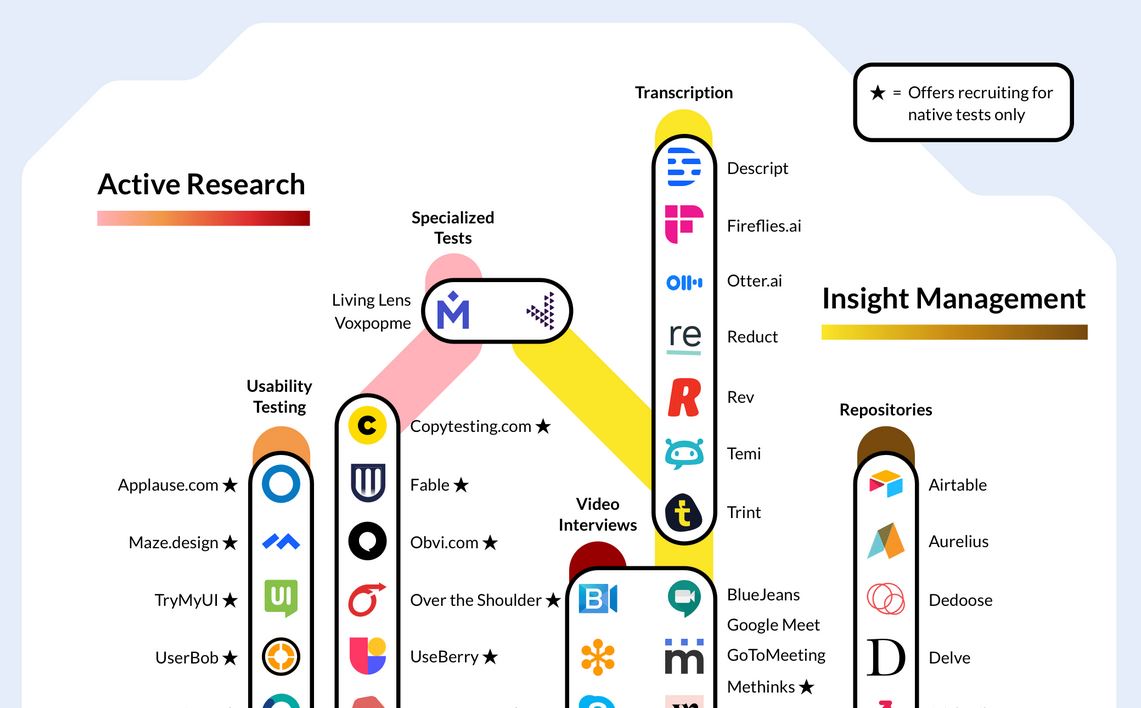Our good friends at UserInterviews have just updated their brilliant UX Research Tools Map to the 2020 version.
Their subway-inspired guide of over 100 UX research tools lists all the different tools you can use to conduct user experience research. You’ve never had so much choice and now, no excuses for not conducting your own UX research!
They have divided the tools into five categories to help you make sense of the evolving UX research landscape. The categories include:
Design –All the tools you need to create a new website, which are predominantly wireframing and prototyping tools.
Passive Insights – All the tools that you can ‘set and forget’ to give you different insights into what is happening with your website, such as Google Analytics, Hotjar and CrazyEgg.
Active Research – These are the tools that require you to get involved and create a research project for more specific UX insights of your website or prototype. These include all the usability testing tools, like Loop11, as well as video conferencing and diary study tools.
Insight Management – All those great tools that help you organise and manage your insights, from Evernote to Dovetail and Trello.
Research Ops – And finally, all the tools that can help you better co-ordinate your active research projects, such as scheduling software like Calendly, to participant recruitment.
You’ll notice that Loop11 has expanded its reach across the map compared to the 2019 version. The introduction of our moderated user testing puts us in a category of our own offering both qualitative and quantitative testing.
You can access and download the 2020 UX Research Tools map here.
![]() Give feedback about this article
Give feedback about this article
Were sorry to hear about that, give us a chance to improve.
Error: Contact form not found.




